
It was billed as an alternative to O’Reilly’s upcoming Web 2.0 conference in San Francisco.
Was it? No.
Was it related to Web 2.0? Not really.
Was it still useful? Yes.

Bambi Francisco and Roland Vogl, Esg.
For a “Web 2.0” event however, it had a completely different group than I’m used to seeing. It seemed to mash veteran Silicon Valley professionals with up-and-coming Web 2.0 entrepreneurs. But, that’s OK. It was still, for all intensive purposes, a valuable event; partially from a content perspective, but mostly from “lobby” leverage – meaning that there were some great people and interesting conversations taking place around the coffee bars and rountables.
Some of the more interesting folks I met with onsite, include:
Greg Narain, blogger at SocialTwister, partner at BlueWhale Labs, and CEO of Social Roots
Vic Podcaster, HotFromSiliconValley.com
Chris Heuer, SocialMediaClub, BrainJams, and Web2point2
John Furrier of PodTech
Ivaylo Lenkov, CEO of SiteKreator
Sunny Madra, founder of PostSticky
Jessica Hardwick, CEO of SwapThing
Mital Poddar of SwapThing
Ranvir Gujral, Partner at BlueWhale Labs and CEO of InsightPath
Joanne Wan, internet entrepreneur
Marissa Mayer, Google
Jared Spool, User Interface Engineering
Lawence Coburn, founder of Rateitall
Ben Wan, angel investor
Roland Vogl, co-founder of a new startup with Bambi Francisco
Bambi Francisco, CBS MarketWatch and also a new start-up, stand by for a follow up post
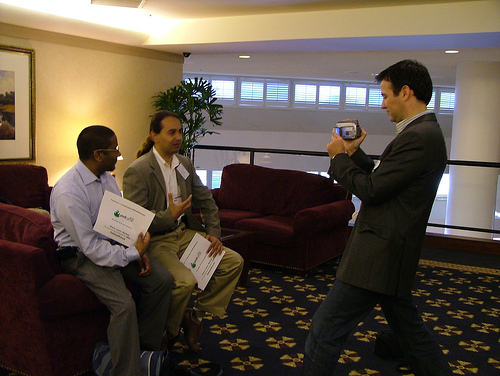
Greg Narain and Vic Podcaster shooting a segment for Bambi Francisco’s new project (nice flyer placement Greg!)
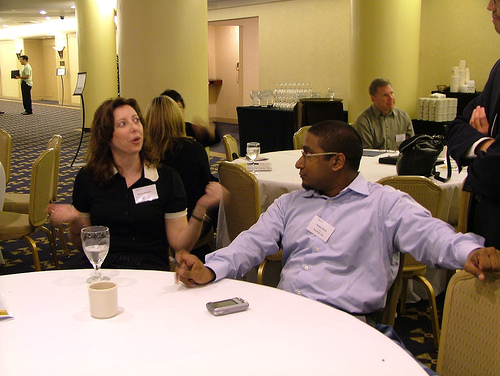
Jessica Hardwick and Greg Narain
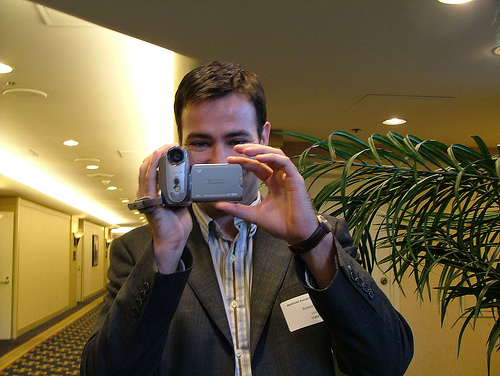
Roland Vogl videotaping my elevator pitch for his new startup with Bambi Fransciso
For this event recap, I’m going to focus on the keynote address because it held the greatest value. It captured the history, state and future of the Web, but then again, it was Ram Shraram, so of course it did.
The event was kicked-off by Daya Baran, WebGuild president.
The panel was moderated by Safa Rashtchy of Piper Jaffray and the keynote was delivered by Ram Shriram, Founding Member, Google Inc. and Sherpalo Ventures.

Ram Shriram
Disclaimer: What lies ahead is a summary and is not verbatim.
Q. What stage of the Web are we in? Everyone talks about 2.0…is that relevant, accurate or even a true description?
RS. The web is more evolutionary than revolutionary. The first wave was about information. The second wave is about enabling consumption and commerce.
Web 2.0 is representative of a whole new set of technologies and new programming tools.
Q. Has there been a change in the user point of view and what they’re doing?
RS. In the developed markets around the world the focus will be on usage growth, email, and new technologies and platforms for search.
In emerging markets, such as Brazil, India, China, and Russia, the markets will be similar, but online virtual communities, vertical applications and gaming are the top current and growth opportunities. Usage growth comes with maturity.
Q. We have had 10 years of popular internet usage in the U.S. Are the emerging markets going to learn from the us?
RS. It’s wrong to look at emerging markets through a U.S. prism. Search has made the world flat. Users now have instant ability to access information. Search will be the primary application driving new capabilities on the Web in both developed and emerging markets.
Q. What are the key factors that determine which applications becomes highly popular?
RS. Viral is the least expensive way to grow a business. In the world of the web, it’s not about first mover advantage.
Let’s look at Friendster, which did execute well, but it’s about open versus closed. Myspace gave freedom to users to customize and personalize their experience. When users are excited, they want to share it with everyone.
Viral growth is preferred, and with a few lucky breaks along the way, sites can take off.
Soft controversy is a good thing too – definitely not like Napster. But sites today, should leverage the blogging community to carry their messages.
There are hyper opportunities out there, but there is also hyper competition. The barrier to entry is so low these days, which opens up the market opportunity to almost anyone.
These days you don’t need a lot of capital to get your idea on the web. In fact, the greatest challenge for start ups is the tremendous shortage of talent.
The primary network effects of these business drivers are the users that flock to the sites.
More users = more content. This helps create community which can advance the cause to succeed.
It’s also important for sites to incrementally role out features instead of dedicating all resources to a never-ending cycle of feature development prior to public BETA release. It’s better to at least get half a product out, rather than a half-assed product
Q. Let’s talk about social networking and your view on why it’s popular?
RS. The primary driver of social applications consists of lots of blocking and tackling.
Users enjoy any form of self expression. The younger generation uses the Internet to communicate. And this is a group that uses the web as their personal community for
self expression and entertainment.
As a developer of social network applications, it’s useful to look at history to understand previous failures and successes. Their competitor is one click away. It’s not enough to define the franchise and stickiness. It’s not like the PC market, you can lose your franchise in an instant.
Q. What determines success?
RS. Let me say that there will not be one winner across the globe.
If you look at Web 1.0, with companies such as ehow and geocities, and countless others, they were, at one point in time, perceived as clear winners.
What creates sustainability? Some say it’s the dynamic nature of the content which lures and keeps visitors there.
These social networks today, such as Myspace, are like the People magazine for users.
Now, with dynamic content through ajax, RSS, and widgets, the experience is more dynamic than ever.
Q. Now let’s talk about monetization. Is it possible for a company to lose focus on its business model in favor of users?
RS. If you build a field of dreams and users come, then ½ the job is already done. If not, move on.
If they come, focus on their needs because if a site is user centric, then monetization is easier.
Consumers have competing things out there to attract their attention, so try to understand the their need and focus on it.
There’s no need for a grandiose idea, just focus on a simple idea. If it works, then it’s a great place to start.
Q. What about advertising revenue as a business model?
RS. I’m seeing a trend in user subscriptions for premium and branded content – sort of like a la carte payments, where you pay one off for whatever you want.
Q. Why should anyone pay if it’s free on something like Youtube?
RS. Software as a service (SaaS), will prove the model for pay-for services online. In the business space, salesforce.com is a perfect example.
Over time, large businesses will deploy online applications to streamline workflow.
The notion of SaaS is not new, but its development and deployment today is unique for today’s market.
Technology has come full circle. It’s still the same premise as a client/server relationship with the whole idea of data sitting out there on cloud.
Q. Let’s talk video. Do you believe video is next killer app on web? Who will be the leaders?
RS. I know I’m not giving a direct answer, but it’s too early to predict. Who would have predicted that Youtube and Myspace would be category leaders 12 months ago?
Nowadays, content is user generated. The creators of the content are also consumers.
Content sharing all morphs into one big conglomeration a la social applications.
With every new medium that comes along, everything else (those that understand innovation) will co-exist.
Look at it this way: there are 200-300 sites for podcasts, social networking, and video sharing. They all co-exist, but their competition is always one click away.
Somewhere along the line, though, you’ll end up with new winners. They’ll just emerge. It’s the power of viral marketing.
Q. OK. Let’s take e-commerce. It used to mean Amazon or ebay. What are the challenges and what does it mean to users today?
Search has made the world flat – like I said before. Brick and mortars and the longtail of commerce are more readily available to the user, compared to 7 years ago.
Do you know which online business had the fastest growth over the last 12 months? The answer is JCPenny.com. No one saw that coming.
It’s no longer about having a pure internet brand. Today, ecommerce building blocks are so readily available, even bricks and mortar companies, and ma and pa shops, can get online.
By the longtail of commerce, I mean that there are lots and lots of companies selling fishing rods and specialized books now, and they all have the ability to bring their products to the world.
The next big opportunity may lie in the vertical sites. For example the average transaction at BlueNile is $4,000. Zappos, for instance, is succeeding online only selling shoes. Many more emerging companies will succeed in vertical silos of commerce.
# # #
Well, that’s a wrap. Special thanks to everyone who took the time to speak with me at the event. I’d also like to send a thank you to Daya Baran, president of the WebGuild.
Jump to the flickr stream for more pictures from the WebGuild event.
Tags: web2.0, web+2.0, google, marissamayer, marissa+mayer, bambifrancisco, bambi+francisco, vc venturecapital, webguild, bluenile, ramshriram, ram+shriram, jcpenny, friendster, myspace, jaredspool, seo, sem, vicpodcaster, bluewhalelabs, gregnarain, chrisheuer,
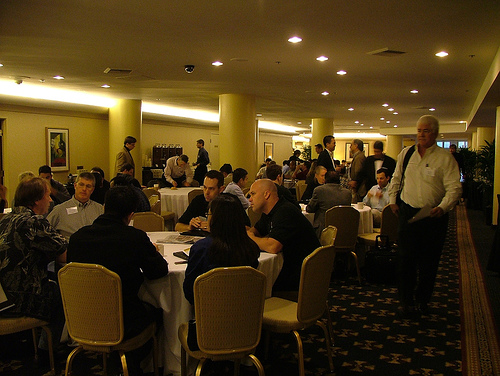
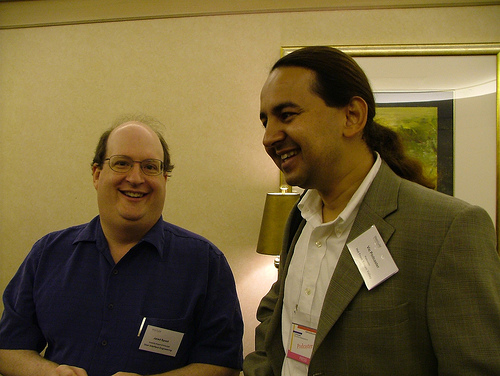
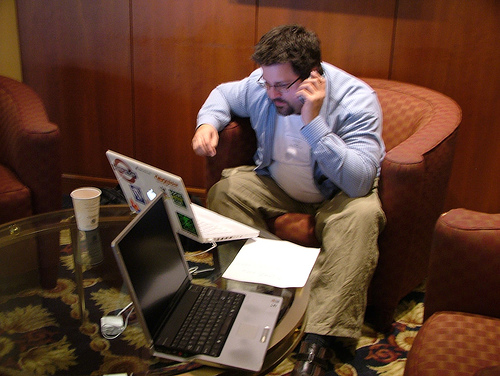
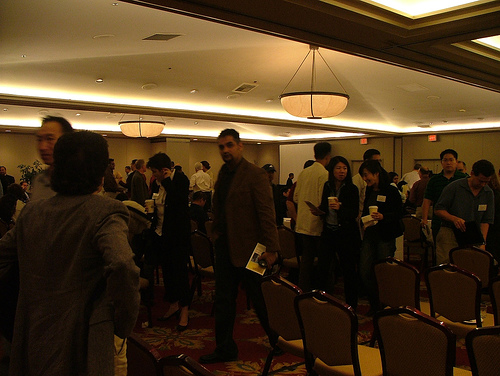
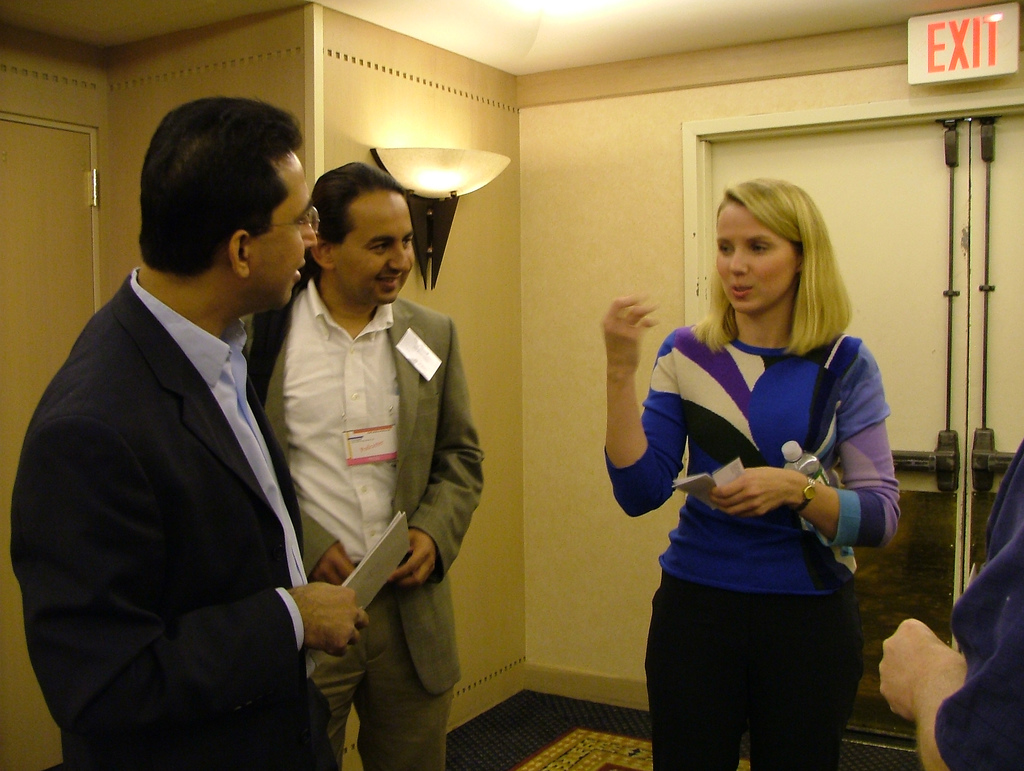
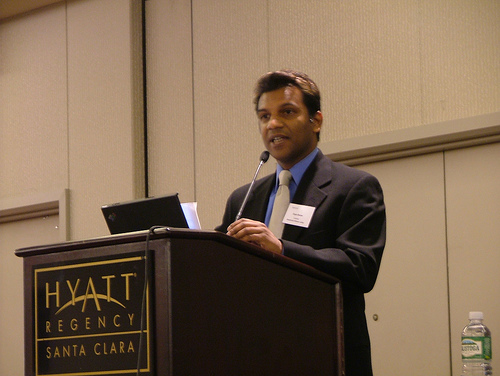
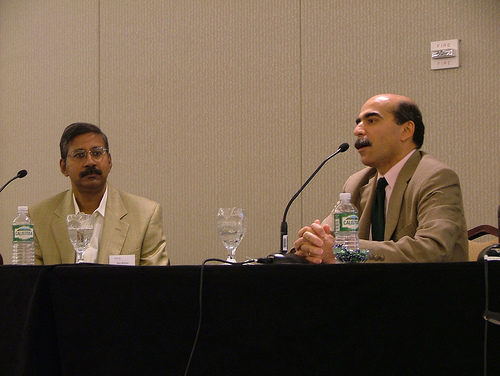
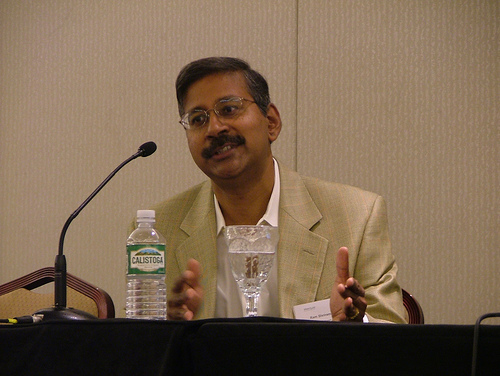
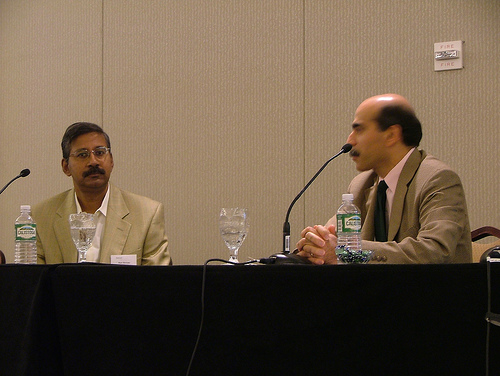

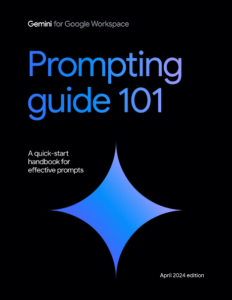



Leave a Reply